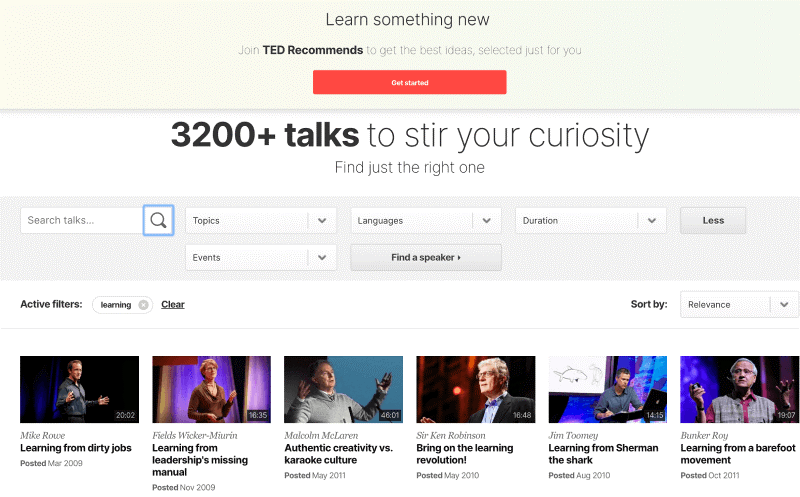The world of learning and development is evolving fast. With a year of learning trends and growth data behind us, we're changing the conversation and bringing you the biggest employee learning trends to shape your strategy in 2024.
But first…
What Is Employee Learning And Why Is It Important?
Employee learning is a broad term that encompasses a wide range of activities aimed at upskilling and reskilling employees. It can be as simple as providing training on how to perform a task, or as complex as developing an entirely new skill set.
Whether it’s improving productivity, reducing turnover, or increasing employee engagement and satisfaction, employee learning positively impacts all aspects of your business.

5 Employee Learning Trends
1. Microlearning
One of the most prominent trends in employee learning is microlearning—a short, focused learning experience designed to teach a specific concept or skill. The format allows learners to consume content in small chunks easily and helps them retain the information they’ve learned.
In a world where information is ubiquitous, it's more important than ever for employees to learn at their own pace. The trend toward microlearning means breaking down course content into bite-size nuggets of information that are easy to consume and digest.
An excellent example of microlearning is TED Talks—short lectures on topics ranging from business and technology to art and culture delivered by experts in their fields.

Employees can watch these videos at their own pace whenever they have some free time during the day or week and then continue with their routine tasks while they digest what they’ve learned.
2. Personalization
This is the ability of the learners to customize their own experience based on their unique needs and goals. Increasingly, learning solutions offer a wide range of personalization options so learners can build their personalized learning paths.
The trend towards personalization can be seen in many areas, including e-learning platforms and mobile apps, which offer the flexibility to create customized content that aligns with individual needs and goals.
An excellent example of how personalization can be used effectively in employee learning comes from LaSalle Network, a recruiting firm in the US that believes in upskilling as the focal point of employee growth and progress.
The HR team and the managers make it a point to keep checking with employees about their interest areas in skill development. They then create customized learning paths for them, including online courses, workshops, mentoring sessions, etc.
3. Gamification
Gamification is a popular trend in learning and employee development. It can encourage employees to learn new skills or accomplish goals using game mechanics like points, badges, leaderboards, and rewards. Gamification has been proven to improve engagement and motivation among learners.
Sally Beauty is company that uses gamification for retail sales training purposes. Sally Beauty created customized eLearning modules for its retail sales executives to learn about different products and how to sell them effectively.

The e-learning modules include video clips from real-life scenarios where customers are being served by Sally Beauty employees, along with quizzes at the end of every module so that trainees can test their knowledge before moving on to the next module.
Gamification isn't just about creating badges or awards that you can exchange for prizes. Instead, it's about creating an environment where people are invested in their work and want to do well because they enjoy it.
4. Peer-to-peer
The concept of “peer learning” has been around for decades but, in recent years, companies have started to see its true potential. The idea is simple: companies should use the knowledge and expertise of their employees to help shape how they train new hires.
It helps employees develop new skills and gain hands-on experience in areas where they may not have direct access to experts or mentors. It also creates a culture of collaboration and teamwork within your organization, leading to more effective teamwork overall.
Cooley is one organization using peer-to-peer learning as part of its strategy. The UK law firm has built an online community where lawyers can share best practices and tips.
They even have an internal hashtag that allows them to organize their conversations around specific topics or events like cases or conferences they've attended recently. Employees must attend workshops with their peers on topics ranging from networking skills to managing stress levels at work.
5. More Emphasis on Soft Skills Training
Soft skills training teaches employees how to communicate better with colleagues, superiors, and clients.
Communication strategies are essential to the employee learning strategy in any industry because it helps employees understand each other’s needs. Soft skills training also helps improve workplace culture by boosting morale and creating a positive environment.

At gaming company Solitaire Bliss, soft skill training is part of their onboarding. Founder Assaf Cohen explains, “We have a number of gaming engineers who are great at developing, but have never received any formal training in communication. When we hire new employees, we show them what ideal email communication looks like, and ask them to write mock emails.”
With the advent of technology, communication has become more accessible. However, it is not just about learning how to craft an email or making a call; you need to prepare a proper communication plan for having a smooth flow of information within the organization.
Learning Is Changing, And So Is The Workplace
With the above trends in mind, how does L&D in your workplace match up? Perhaps you’re still putting together an official learning and development strategy, or wondering what to look out for in your new learning management system.
Further reading:
- How to Create a Thriving Culture of Learning
- 18 Key Learning Management System Features
- How to Go from Manager to Coach
- 6 Reasons To Invest In Employee Development
- 3 Reasons Why Blended Learning Might Be Right For Your Team
- How To Create A Learning And Development Program To Grow Your Team
- Best Online Training Software for Internal Training
- The 4 Methods For Effectively Training Employees
- Best Learning And Development Conferences
Subscribe to the People Managing People newsletter for more content to help you progress in your career and build healthy, productive organizations.


